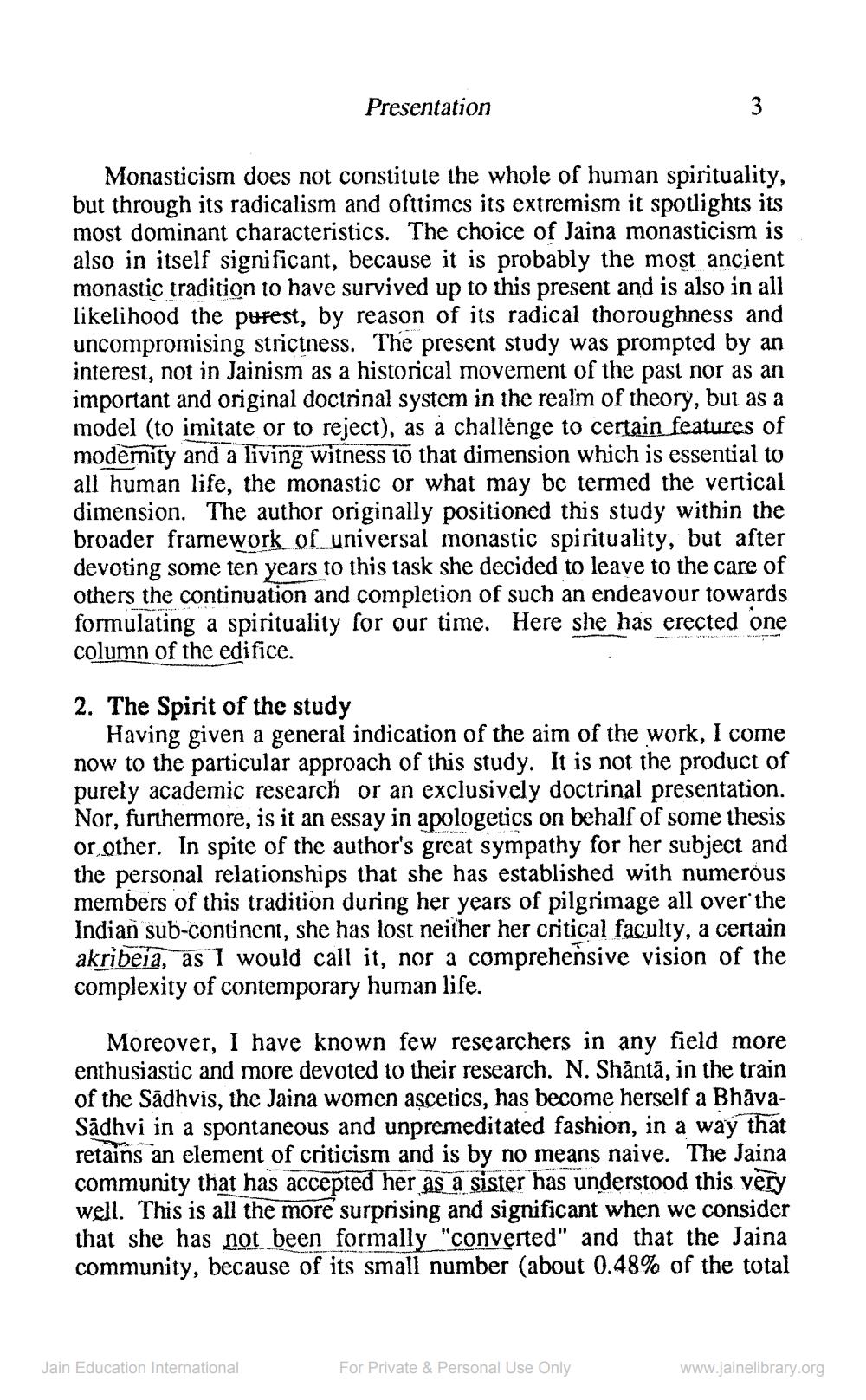________________
Presentation
Monasticism does not constitute the whole of human spirituality, but through its radicalism and ofttimes its extremism it spotlights its most dominant characteristics. The choice of Jaina monasticism is also in itself significant, because it is probably the most ancient monastic tradition to have survived up to this present and is also in all likelihood the purest, by reason of its radical thoroughness and uncompromising strictness. The present study was prompted by an interest, not in Jainism as a historical movement of the past nor as an important and original doctrinal system in the realm of theory, but as a model (to imitate or to reject), as a challenge to certain features of modemnity and a living witness to that dimension which is essential to all human life, the monastic or what may be termed the vertical dimension. The author originally positioned this study within the broader framework of universal monastic spirituality, but after devoting some ten years to this task she decided to leave to the care of others the continuation and completion of such an endeavour towards formulating a spirituality for our time. Here she has erected one column of the edifice.
2. The Spirit of the study
Having given a general indication of the aim of the work, I come now to the particular approach of this study. It is not the product of purely academic research or an exclusively doctrinal presentation. Nor, furthermore, is it an essay in apologetics on behalf of some thesis or other. In spite of the author's great sympathy for her subject and the personal relationships that she has established with numerous members of this tradition during her years of pilgrimage all over the Indian sub-continent, she has lost neither her critical faculty, a certain akribeia, as I would call it, nor a comprehensive vision of the complexity of contemporary human life.
Moreover, I have known few researchers in any field more enthusiastic and more devoted to their research. N. Shāntā, in the train of the Sādhvis, the Jaina women ascetics, has become herself a BhāvaSadhvi in a spontaneous and unpremeditated fashion, in a way that retains an element of criticism and is by no means naive. The Jaina community that has accepted her as a sister has understood this very well. This is all the more surprising and significant when we consider that she has not been formally "converted" and that the Jaina community, because of its small number (about 0.48% of the total
Jain Education International
For Private & Personal Use Only
www.jainelibrary.org




